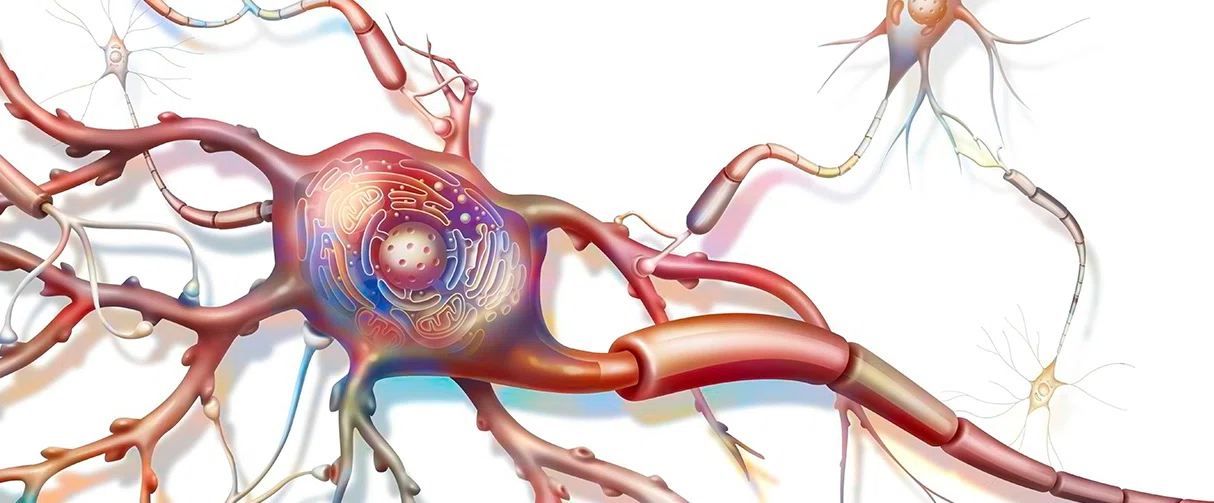


Precision Medicine
Taking Neurology to New Frontiers
Jun Li, MD, PhD, the new chair of the Stanley H. Appel Department of Neurology answered a few questions about his career trajectory and his vision for the department.

The Stanley H. Appel Department of Neurology at the Houston Methodist Neurological Institute welcomed its new chair Jun Li, MD, PhD, in June 2022. Before Houston Methodist, Li served as chairman of the Department of Neurology, scientific director of Translational Neuroscience Initiatives at Wayne State University and tenured professor of neurology at Vanderbilt University. An expert in peripheral nerve diseases, Li brings with him a wealth of experience in both bench research and clinical practice. He spoke with the Methodology team about his career trajectory and his vision for the neurology department he now leads.

Jun Li, MD, PhD
Professor of Neurology
Houston Methodist
What got you interested in neurology?
I became interested in neuroanatomy and neurophysiology as a medical student. The logical diagnostic procedures in neurology are absolutely fascinating. When it was time for my clinical rotations, neurology was my natural and obvious choice. But then, I also pursued a PhD in neuroscience to equip myself with skills in scientific exploration.
Which area of neuroscience research did you find most interesting at that time? How did you pick your thesis topic?
I joined a lab where we investigated motor control in animal models, such as how the movements on the left and the right of the body are coordinated. I got really interested in reflexes that stabilize the eye’s gaze on a target when there are head movements. You may have experienced it yourself when looking out of the window of a moving vehicle. Your eyes can track an object even as the train is moving. Turns out, this vestibular ocular reflex is a great model to study motor learning, and I was focused on that for my PhD. In fact, I was quite convinced that I will eventually become a movement disease specialist. But then, during my neurology residency interview, I met Dr. Jerry Mendel, who changed my career path.
Did Dr. Mendel sway you into peripheral nerve diseases, the area you specialize in today?
Yes. He is an expert in neuromuscular diseases, including peripheral nerve diseases. But he is also an incredibly inspirational teacher. I met him during my interview and attended his professor rounds. By the end, I had completely changed my trajectory; I wound up pursuing peripheral nerve diseases instead of movement disorders.
But there are many peripheral nerve diseases, how did you decide which one you would want to study?
You are right, there are many types of peripheral neuropathies, but I had a keen interest in the ones that are inherited. Let me step back a bit. Like many other nerves in the body, peripheral nerves are wrapped in a fatty coating or myelin produced by a type of glial cell, called Schwann cells. The loss of myelin, due to disease or damage, affects the speed at which nerve impulses travel, causing neurological problems, including peripheral neuropathies. During my clinical practice, I saw many patients with inherited peripheral nerve disease. So, a single gene mutation in these patients initiates a whole cascade of biological events that eventually leads to demyelination and the appearance of clinical symptoms. Based on our clinical observations, we created animal models with the same monogenic mutations and then investigated the underlying molecular mechanisms and proteins behind myelination and demyelination. This type of model gives a very clear starting point that leads to the final pathology – demyelination. As you can infer, I like to use reductionism to simplify the problem I am solving.
We are thrilled that you have brought your insightful research to Houston Methodist, but are there new research directions you will be pursuing?
Absolutely! While I was at Vanderbilt University, I mentored junior faculty who have now joined me at Houston Methodist. They will be using the same approach to understand other neurological diseases, in addition to inherited neuropathies. And so, they too will be investigating how the myelin gets wrapped normally and how this process gets disrupted in these diseases.
What scientific tools will you be using to address your research questions?
You always want to use advanced technology to study your scientific questions, but you also want to make sure that whatever technique you use fits the scientific question. In other words, the scientific question determines the best tool to answer that question, whether the tool is old or new. For example, we have used the gene-editing tool, called CRISPR-Cas9 to produce the genetic defect that we see in humans in animal models.
And lastly, where do you see yourself and your group's research five years from now?
In the next five years, I’d like to build a scientific team with members with different areas of expertise who will work synergistically to understand the mechanisms of axon loss and demyelination. The goal is to develop therapies against these pathologies which are the key changes in most neurological diseases. My vision is to push our departmental research to a much higher level by emphasizing originality through novel discoveries that are unique to our scientific team.
On a lighter note, how are you adjusting to life in Houston?
My wife and I are really enjoying it so far. The cuisine of Houston is fantastic! We find Houstonians friendly and welcoming.
Vandana Suresh, PhD
April 2023
Related Articles





